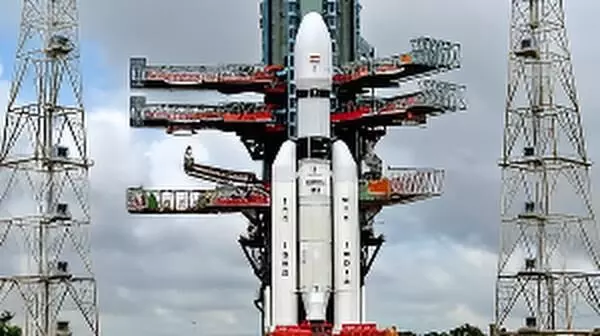ISRO Set to Launch ‘Bahubali’ Rocket Carrying Heaviest Communication Satellite CMS-03 Today: Where To Watch
The Indian Space Research Organisation (ISRO) is gearing up to launch its heaviest communication satellite, CMS-03, today at 4:56 PM IST.
image for illustrative purpose

The Indian Space Research Organisation (ISRO) is gearing up to launch its heaviest communication satellite, CMS-03, today at 4:56 PM IST. The satellite, also known as GSAT-7R, will be carried into space by the LVM3-M5 rocket, popularly nicknamed ‘Bahubali’ for its heavy-lift capability. The launch will take place from ISRO’s second launch pad at Sriharikota, Andhra Pradesh.
Weighing around 4,410 kilograms, CMS-03 will be placed into a Geosynchronous Transfer Orbit (GTO). The satellite has been developed to bolster India’s communication infrastructure, particularly for the Indian Navy and maritime operations across the Indian Ocean.
Key Details About CMS-03
CMS-03, an advanced multi-band communication satellite, will carry UHF, S, C, and Ku-band payloads to enable secure voice, video, and data links for strategic use. Once operational, it will replace the existing GSAT-7 Rukmini satellite, further strengthening India’s defense and naval communication network.
The mission aims to enhance digital connectivity across remote and strategic regions, offering high-capacity bandwidth to both defense establishments and civilian users in far-flung areas.
Where to Watch the Launch
Space enthusiasts can watch the live broadcast of the LVM3-M5 CMS-03 mission through ISRO’s official YouTube channel. The livestream is scheduled to begin ahead of the 4:56 PM launch.
Significance of the Mission
The CMS-03 launch highlights the growing importance of LVM3, India’s most powerful launcher, which successfully carried Chandrayaan-3 to the Moon in July 2023. This mission will further showcase LVM3’s capability to handle larger and heavier payloads, strengthening India’s space infrastructure and global standing in satellite technology.
LVM3-M5: Technical Configuration
| Stage | Description | Length (m) | Diameter (m) | Propellant | Propellant Mass (t) |
|---|---|---|---|---|---|
| Strap-Ons (2 x S200) | Solid boosters | 26.22 | 3.2 | Solid (HTPB) | 204.5 each |
| Core Stage (L110) | Main liquid stage | 21.4 | 4.0 | Liquid (UH25 + N₂O₄) | 115.9 |
| Upper Stage (C25) | Cryogenic stage | 13.5 | 4.0 | Cryo (LH₂ & LOX) | 28.6 |
Mission Parameters
| Parameter | Specification |
|---|---|
| GTO Apogee | 29,970 ± 3,700 km |
| GTO Perigee | 170 ± 3.5 km |
| Inclination | 21.4° ± 0.1° |
| Argument of Perigee | 178° ± 0.3° |
| Launch Azimuth | 107° |
Previous Successful LVM3 Missions
| Sl. No | Mission | Launch Date | Payload |
|---|---|---|---|
| 1 | LVM3/CARE | Dec 18, 2014 | Crew Module Atmospheric Re-entry Experiment (CARE) |
| 2 | LVM3-D1/GSAT-19 | Jun 5, 2017 | GSAT-19 |
| 3 | LVM3-D2/GSAT-29 | Nov 14, 2018 | GSAT-29 |
| 4 | LVM3-M1/Chandrayaan-2 | Jul 22, 2019 | Chandrayaan-2 |
| 5 | LVM3-M2/OneWeb India-1 | Oct 23, 2022 | OneWeb Gen-1 |
| 6 | LVM3-M3/OneWeb India-2 | Mar 26, 2023 | OneWeb Gen-1 |
| 7 | LVM3-M4/Chandrayaan-3 | Jul 14, 2023 | Chandrayaan-3 |
The Bigger Picture
With CMS-03’s launch, ISRO continues its momentum in 2025, showcasing India’s technological self-reliance and space capability. The mission not only boosts defense communication but also expands the nation’s reach in satellite-based digital connectivity, a key pillar for India’s space and digital future.

